#phyllotaxis
Text
Phyllotaxis 🌿🌻🌀
Phyllotaxis are spirals found in plants originally observed (by Modern times) by Leonardo DaVinci Indian Scientists took note of it and created the Fibonacci sequence in 1837. (though I didn't do enough research to know if it's a direct correlation)
Phyyllotaxis essentially is the organization of plant organs.
Plants can be broadly classified into two main categories based on their arrangement of leaves:
spiral phyllotaxis, characterized by a consistent divergence angle between successive organs,
and whorled phyllotaxis, where multiple organs occur at the same level along the stem.
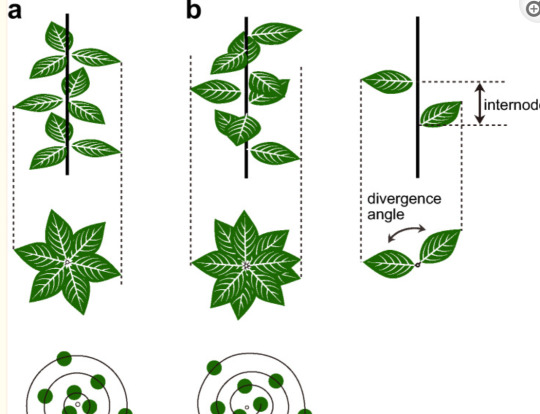
but here are some more striking examples
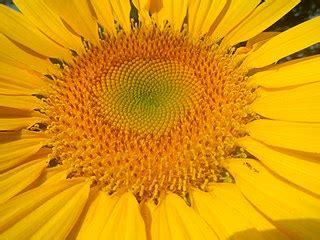

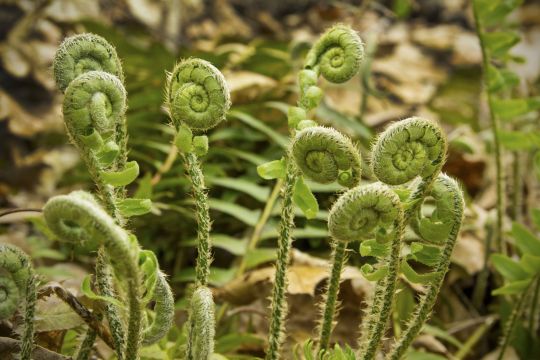
sources:
https://www.ncbi.nlm.nih.gov/pmc/articles/PMC8106590/
2 notes
·
View notes
Photo

Gemstones, 2017
3 notes
·
View notes
Text

White Rabbit on the Road to Baguio — Johanna Poethig
Painting (acrylic), 42" x 53" x 1.5"
Presented at The deYoung Open 2023 (ID #169)
Listed for $4500 *
Artist statement:
On a road stop along the steep mountain pass to Baguio City in the 1950s I ask for candy from an unwilling Ifugao girl. The classic White Rabbit candy from China crosses generations and cultures, still popular in the 21st century, floats with the ancient bronze amulet of the Ifugao in the visual stream of this childhood encounter. The two children stand in a field of phyllotaxis algorithmic patterns that embody the life systems that sustain us. This painting is a moment of innocence steeped in Philippine and US colonial history. My work encompasses memory, culture, politics and the natural environment mixing abstraction, figuration and symbol and some humor in this visual narrative.
Johanna Poethig is a visual and performance artist based in California. To learn more about her work and to view her other creations, visit johannapoethig.com . You can also find her on Instagram @johannapoethigsilver .
The deYoung Open is a triannual exhibition featuring artwork by California-Bay Area creators. The most recent exhibit was on display at The deYoung Museum in San Francisco from 09/30/2023 to 01/07/2024. To learn more and view a digital gallery of all 883 pieces that were featured, visit deyoungopen.artcall.org . And if you're an artist from Alameda, Contra Costa, Marin, Napa, San Francisco, San Mateo, Santa Clara, Solano, or Sonoma County, you should consider making a submission for 2026! Applications will probably go live in early June 2026, so you have some time to plan :)
I am not an affiliate of The deYoung Museum, Johanna Poethig, or any of the artists featured in The deYoung Open 2023. I'm just posting to celebrate some amazing CA artists. If you are the artist and would like me to take this post down or add additional credit, please message me on Tumblr.
* Listing price is shown on the deYoung Open website at time of writing. The artwork may no longer be available for sale.
#The deYoung Open 2023#White Rabbit on the Road to Baguio#Johanna Poethig#art#phyllotaxis#acrylic painting#painting#philippines#ph#california artist#bay area artist#california#bay area#san francisco#the deyoung museum
1 note
·
View note
Text
Busty Kinky Teen Redhead Masturbating for Tips
Bang movie scene tumblr
Horny Teen Stepdaughter Seduce Dad While Mom Sleeps
dapperilllord getting high
Shemale Blowing Another One
18 yo pinay student anal play and masturbation
Gay movie mobile teen bondage A Boys Hole Used For Entertainment
Step Brother Gets Caught Fixing Spy Cam in His Sisters Room
Domininica masturbandose
morena rebolando gostoso na rola
#jequirities#squirreling#reprovals#Phytophagineae#euchroic#unthoughtful#rhythmically#Aonian#epagomenae#honky-tonk#fastland#phyllotaxis#airwash#euhemerising#Fatah#nineties#homeothermy#legally#anti-Greece#dead-stick
0 notes
Text
youtube
Here's the new single from my album Javelin. Video animated by Stephen Halker. “Will Anybody Ever Love Me?” More info here.
THANK YOU.
Quick background about the video: my friend Stephen Halker took elements from the album art that I made (collage, paper arts, paintings etc.) and incorporated them into these really wild CGI fantasy landscapes that he created. He sent me some notes about his process and approach that I thought were really cool, if you're interested.
From Stephen:
"This is what I was really thinking about when i made this video:
It's like walking into someone's soul. First they put up these facades that look normal, but then you find out how messy they are.
I wanted it to start out super normal and cultivated. a landscape made flat by the machinations of an agrarian society.
Then a nice walk through a forest. nothing special. but more wild
Then the expanse of a grand canyon.... but you go, "hey what's that thing on the ground? Is that supposed to be there?
The grasslands are when you start to see curated memories. clean circles of thoughts. Everything is still manageable, manicured, controlled. but what's that on the horizon. looks like there's some bigger thoughts buried in those grassy north dakotan buttes.
Then comes the chorus. You gotta mix it up for the chorus. This scene is called darklands in my computer. I made the hexagons to reference Carrie and Lowell. i thought of this structure as if it was the longings of the heart. this sort of plinth of idols. Starting with the starlet from the "Will anybody ever love me" page of the booklet. Then transferring that longing to archetype.... then parents, family, friends, the love of the masses...
Once you know this much about someone, the rest of it is just is just a continuation of craziness. I wanted to morph from contained circles toward individual cut out shapes.
moving through different corridors and memories.
Obsessing over one memory.
Building towers of meaning, trying to make sense of moments events through repetition and fortification.
Second chorus was supposed to recall some of the previous scenes. the wheat, the Planet, travelling through the same hexagons, but this time they aren't filled with icons. just patterns.
you travel through the puffy paint wormhole into a less tethered version of the self.
No more landscape. just a repetition of memories. The world has fallen away.
I've always loved phyllotaxis and golden sections. they feel very.... "this goes on forever"-y.
The image of your face split in half, thrown into this fibonacci sequence reminded me of your "perpetual self" song from avalanche (which has always stuck with me)
There's a floor again. but now it's just the triangle and tape patterns. illuminated.
Flip to the image of Katrina under the owl was giving off a strong "athena" vibe. Goddess of wisdom, craft, warfare. She could make sense of my warring emotions.
End scene."
instagram
instagram
instagram
762 notes
·
View notes
Text
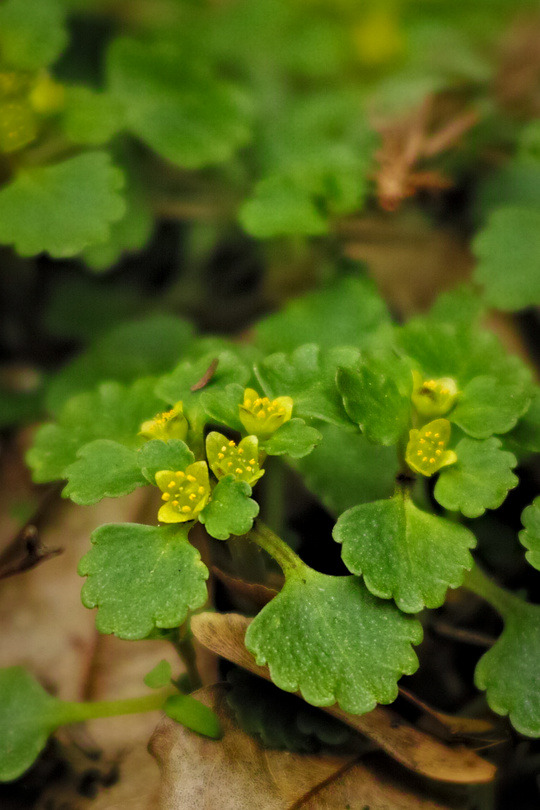
零余子猫の目草[Mukagonekonomesō]
Chrysosplenium maximowiczii
零余子[Mukago] : Propagule
猫[Neko] : Cat
の[No] : Of
目[Me] : Eye
草[Sō] : Grass, herb
The members of golden saxifrages, the genus Chrysosplenium, are difficult to identify because they are very small and have many allied species. My rationale for considering that one to be Mukagonekonomesō is as follows; there are four stamens, the leaves are relatively small and their phyllotaxy is opposite, the bracts do not turn yellow, and so on.
Another name is 珠芽猫の目[Tamanekonome]. 珠芽 is also read as mukago and shuga, and in this case, the reading of 芽[me] is omitted. It is said that the name Nekonome was given because its seeds look like cat's eyes when they break open. Endemic to Japan and its numbers are declining today.
https://en.wikipedia.org/wiki/Cat's_Eye_(manga)
https://en.wikipedia.org/wiki/Cat_Eyed_Boy
16 notes
·
View notes
Text

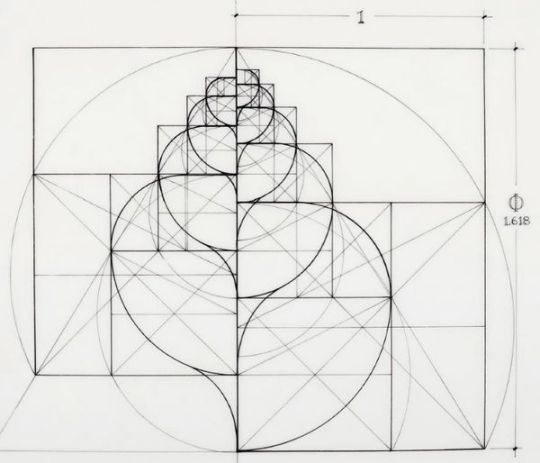
GEOMETRY/ GOLDEN RATIO
Golden Geometry by Rafael Araujo
The Golden Ratio: A Principle of Energy Flow
The golden ratio, seen in structures as vast as galaxies or as intricate as DNA, has long been the symbol of ideal harmony. Duke University's Adrian Bejan ties this unique ratio to a universal law of nature's design. Through his work on the constructal law, Bejan reveals how nature shapes itself to ease flow. The essence of the golden ratio, he suggests, lies in achieving maximal efficiency with minimal energy (Bejan, 2009).
This ratio allows structures to scale infinitely without changing their core shape, resulting in its recurrence throughout nature. By choosing the path of least resistance, the golden ratio epitomizes energy-efficient flow. This is evident in falcons, which harness the golden spiral for an energy-saving approach to their prey (Tucker, 2000), and in plants, where Fibonacci spirals display energy optimization in phyllotaxis (Li et al., 2007).
8 notes
·
View notes
Text
"The spiral is perceived to be the torque of the universe. Found at all levels between the macrocosm & the microcosm, from spiral galaxies, to weather systems, to the water in your bathtub drain, to your DNA."
This sacred spiral, Golden Ratio, Phyllotaxis -> Φ Phi-llotaxis pattern 🌻 isn't just found all throughout which constructs nature, but is the same pattern as energy transmission lines / Frequency, to the very pattern of the magnetism itself, as seen with a magnet under a Ferrocell. 🍩 🧲 ⚛️
THIS is universal "LAW & ORDER"
See how many NATURAL sacred geometric patterns & formulas have been STOLEN & perverted by the occult, yet they're waved in our faces absolutely EVERYWHERE on a daily basis that we're completely oblivious to
⚛️ 🍩 🌀 🧲
To remove FAITH, you remove ORDER
There is DIVINE "LAW & ORDER" in the universe. But, that's the point of hiding it from us. It proves order, & of that order, proves The Divine.
You are more than you know. 🤔
#pay attention#educate yourselves#educate yourself#knowledge is power#reeducate yourself#reeducate yourselves#think for yourselves#think about it#think for yourself#do your homework#do your own research#do some research#ask yourself questions#ask yourself#question everything#spiritual growth#spiritual journey#spiritual transformation#you are more than you know
41 notes
·
View notes
Text
Mod 1: Bryophytes
Ngl I have no idea how to prepare for the botany paper, but I might as well try something-
Polytrichum
Classification:
Class - Bryopsida
Order - Polytrichales
Family - Polytrichaceae
Genus - Polytrichum
Gametophyte
External Structure:
The nature of gametophyte of polytrichum is differentiated into 2 parts: A horizontal underground rhizome and an erect leafy shoot.
Rhizome: The horizontally growing underground portion of the gametophore. It bears small, brown or colorless leaves in three rows and numerous rhizoids.
Leafy Shoot: The erect leafy axis arising from the rhizome. It is differentiated into a stem-like central axis which bears dark green expansions. The so called leaves are spirally arranged in 3/8 phyllotaxy.
The leaf is differentiated into a sheathing leaf base and an apical limb. The limb is narrow, lanceolate, and green. Leaf base is colorless and membranous, closely clasped around the stem.
A short transition zone is present between the rhizome and the aerial shoot. It bears small brown leaves similar to those on rhizome.

Internal Structure:
I. Rhizome: In most of the species, the rhizome is triangular in outline with rounded corners. A transverse section of rhizome shows the following regions:
a) Epidermis: The outermost layer of thick walled cells. They give rise to rhizoids.
b) Cortex: The epidermis is followed by cortex consisting of 3-4 layer of thin walled parenchymatous cells.
It is interrupted by 3 hypodermal strands that extend radially from periphery to center.
Hypodermal strands composed of prosenchymatous cells contain starch grains. Extending inwards from each hypodermal strand is a group of lignified cells containing radial strands.
Next to the cortex, there is a layer of radially elongated cells with suberized thickening on their walls. This layer can be compared to the endodermis of higher plants.
c) Pericycle: A 2-3 layered parenchymatous pericycle is present between endodermis and the central conducing strand. It is discontinuous.
d) Leptoids: There are thin walled polygonal cells present in furrows opposite to the radial strands. They are like sieve tubes of phloem hence called leptoids. The cells collectively form lepton.
e) Amylom: The innermost later of leptoids is separated from the central cylinder by a single layer of parenchymatous cells containing starch. This layer is called amylom.
f) Central Cylinder: Situated in the central region of the rhizome. Made up of 2 types of cells: thick walled living cells called stereids and empty dead cells called hydroids. Both of them together make up the hydrom.
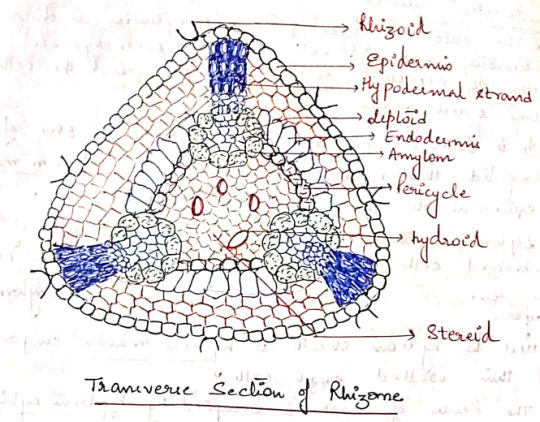
II. Aerial Shoot: In transverse section, the aerial shoot is irregularly lobed due to the presence of leaf bases. It is differentiated into 3 regions:
a) Epidermis: The superficial uniseriate later. Discontinuous due to the persistent leaf bases.
b) Cortex: Epidermis is followed by broad cortex. Outer cortex is made of prosechymatous cells and inner is made of parenchymatous cells.
In young shoots, the cortical cells contain chloroplasts.
A large number of leaf traces are also present in the cortex.
c) Central Cylinders: The outermost later of central cylinders is discontinuous and is composed of parenchymatous cells. It represents rudimentary pericycle. The cells store starch grains.
It is followed by 3-4 layered irregular zone of elongated thin walled cells. This zone is leptom mantte ( equivalent to phloem of vascular plants)
Leptom mantte is followed by 1-2 layers of suberized cells which form hydrom sheath. The cells are rich in starch and also called amylom layers.
Next to hydrom sheath is hydrom mantte composed of think walled empty cells.
The center of shoot is occupied by hydrom cylinder made up of thick walled cells. These cells help in conduction of water and hence equivalent to the xylem of higher plants.

III. Leaf
A transverse section of the limb of the leaf shows a thick midrib, gradually tapering into 2 rudimentary wings.
The ventral surface is bound by a distinct epidermis. It is covered by thick cuticle. Epidermis is followed by sclerenchymatous hypodermis.
The ground tissue (cortex) is composed of parenchymatous cells.
The dorsal surface of limb is made up of vertical plates of cells called lamellae. Each lamellae has 4-8 cells; all cells contain chloroplasts except the terminal one. This terminal cell is larger than outer cells and sometimes it is (___)
The arrangement of cells in lamellae and presence of any spaces between adjacent lamellae increases the photosynthetic area.
The wing is composed of a single layer of hyaline cells. Lamellae are not present in the wing region.
The wings become dry and curved when the plants grow in dry habitats.
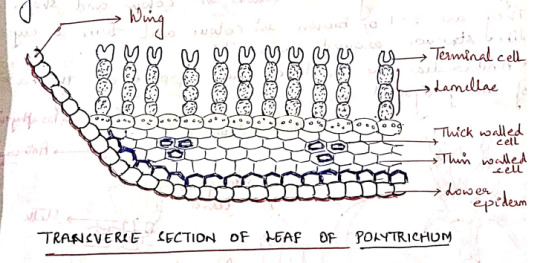
Reproduction: In polytrichum, reproduction takes place by vegetative and sexual methods.
I. Vegetative Reproduction: Takes place by bulbils which develop on rhizome. Besides, fragmentation of underground rhizome also helps in propagation.
II. Sexual Reproduction: Polytrichum is dioecious, the male (antheridia) and the female (archegonia) sex organs develop at the spices of main shoots of separate plants.
Antheridia:
They are born at the apex of the male gametophore. They are surrounded by a whorl of specialized leaves, called perigonial leaves. These leaves differ from vegetative leaves in color and shape. They are red or brown in color and form a cup like structure around antheridia.
Antheridia are produced in groups at the base of the perigonial leaf.
The mature antheridium is a club shaped structure with an elongated body and a short stalk. They body has a single layered jacked of sterile cells, enclosing a mass of androcytes.
At the free distal end of the antheridium is the operculum consisting of a single or few large cells.
Intermingled the antheridia in the antheridial head are steric multicellular hair like structures called as paraphysis.

Aechegonium:
They are borne in groups at the apex of the female gametophore.
The leaves surrounding the archegonia are called the perichaetial leaves. These leaves overlap close over at the top of the archegonial (cluotes??) to form a bud-like structure called the perichaetium.
Intermingled with the archegonia in the cluotes(Still??) are paraphysis.
The mature archegonium is a flask-shaped structure consisting of a long neck, venter, and a stalk.
The venter cavity contains a single spherical egg and a ventral canal cell.
The long, narrow neck consists of 6 vertical rows of neck cells enclosing a narrow neck canal which has a row of neck canal cells (10)

Fertilization:
Water is essential for fertilization. The jacket sells of the mature antheridium swell by absorbing water. The hydrostatic pressure thus generated bursts the operculum and the antherozoids are liberated.
The neck canal cells and the venter canal cell of mature archegonium degenerate forming a mucilaginous mass.
The mucilaginous mass swells up by absorbing water and as such the cover cells present at the tip of the archegonium are pushed apart.
The antherozoids are attracted towards the archegonia and a number of antherozoids swim down the neck but only faces with the egg and this oospore is formed.
Sporophyte
The sporophyte of polytrichum is differentiated into a foot, a long seta, and an angular capsule.
Foot: A dagger-shaped structure embedded in the female gametophore. It is composed of parenchymatous cells. It acts as an anchoring and absorbing organ.
Seta: A long, slender structure between the foot and the capsule. Anatomically, seta is differentiated into epidermis, hypodermis, parenchymatous cortex and a central cylinder, 'hydroids'
The main function of seta is to raise the capsule to the height and conduction of water and nutrients.
Capsule: The capsule is differentiated into 3 parts:
a) Apophysis (Basal part): The distal end of seta gradually enlarges to form a bulbous apophysis ad the base of the capsule. It has a thick walled epidermis continued with that of the seta.
Epidermis is interrupted by stomata, each stoma has 2 guard cells. It is followed by chlorenchymatous cortex and it serves as photosynthetic tissue.
The central part of apophysis is occupied by a conduction strands which is in continuation with the columella and seta (sterile).
b) Theca (Fertile): The middle fertile part of the capsule. It shows many longitudinal grooves. The wall or jacked of theca is composed of several layers of chlorophyllous cells. The outermost layer forms epidermis devoid of stomata. 'Thickwalls', 2-3 layers of cells, chlorenchyma wall layers.
An air space of lacuna is present inner to the wall layers and is divided into small chambers by transverse filaments of chlorophyll containing cells, the trabeculae.
The outer space is followed by space sac. The fertile cells present inside the spore sac constitute the archesporial tissue.
Initially the archesporium is single layered but it becomes many layered in later stages of development of the sporophyte.
The last generation of archesporial-cells differentiates into spore mother cells. Each spore mother cells will form four haploid spores.
The spore sac is also surrounded on the sinner side by an inner air space. It is also transversed by many transverse trabeculae.
The central part of the capsule is occupied by a thick column of parenchymatous cells, the columella. This is a sterile tissue which is continuous with the central axis of the apophysis.
c) Operculum: The apical part of the capsule which forms a cap-like structure at the apex of the theca. It has an extended proximal part, called rostrum, and a projects beak-like distal(?) part.
The boundaries of the operculum and theca are marked by a distinct countriction(??), the rim.
The distal end of the columella is expanded into a pale thin membranous epiphragm at the base of the operculum.
In the mature capsule the peristome is composed of 32 or 64 peristoimal teeth. The teeth are pyramidal and composed of fiber like cells several layers in thickness.
Peristome regulates spore discharge. They do not exhibit hygroscopic movements.
Dehiscence of Capsule:
At maturity, the capsule shrivels as it dries up. The columella disintegrates and the spores come to lie in the cavity thus formed.
Further drying and shriveling of the capsule wall causes the operculum to fall off and thus exposing the peristome.
After exposure of the peristome, thin walled cells of the epiphragm lying between the peristomial teeth also dry and this several minute holes are formed. The spores are dispersed through these holes.
Only a few spores are liberated every time the capsule sways in the wind. This method of spore dispersal is known as censor mechanism.
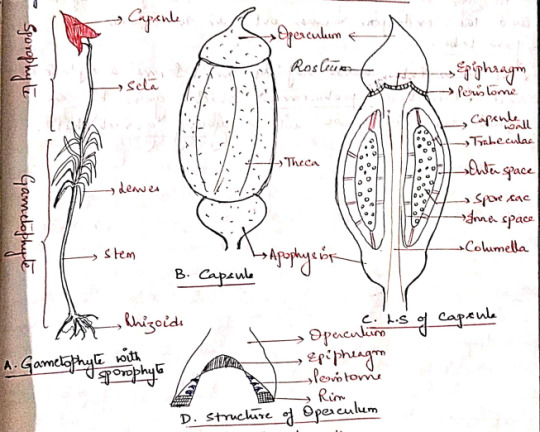

Young Gametophyte:
The spores are small sounded structures, yellow but turn green immediately after dispersal. The spore wall is differentiated into an outer exospore and an inner endospore.
At the time of germination, the exospore ruptures and the endospore comes out in the form of germ tube.
The germ tube grows rabidly and forms a septate and branched protonema, which grows by an apical cell. It grows into a young gametophyte.
Evolution of Sporophyte in Bryophytes
The sporophyte of the majority of liverworts and mosses show the same plan. It is made up of an anchoring and absorbing foot, a stalk like seta, and a capsule which contains spores and elaters.
A comparative study of the sporophytes shows that there has been a progressive reduction in the amount of the fertile tissues from Marchantials to Bryales.
In all the bryophytes the oospore, formed as a result of fertilization, is the mother cell of sporophyte. In the simplest type of sporophyte the entire oospore is utilized in the formation of spores and capsule wall.
In some simple forms, some spore mother cells, which fail to develop into spores, form elaters.
In complex forms, the oospore develops into a sporophyte which is differentiated into foot, seta, and capsule.
The following 2 contrasting views have been put forwards with regard to the evolution of sporophytes in bryophytes: progressive sterilization and progressive reduction.
Evolution of Sporophyte by Progressive Sterilization
This view, aka "theory of progressive evolution" or "theory of sterilization" was put forward by Bower and supported by Cavers and Campbell.
According to this theory, the sporophytes of the complex forms (ex: Funaria) have evolved due to progressive sterilization of the potential fertile tissue of the simpler forms (ex: Riccia)
In primitive forms the sporophyte is simple and made of the tissue of the sporophyte is fertile (???)
The progressive sterilization from Riccia to Funaria occurred through the following stages:
First Stage: The simplest known sporophyte among bryophytes is that of Ricca. It consists of only capsule, there being no trace of seta and foot.
The entire sporogenous tissue is converted into spores. Few sterile cells (nurse cells) have nutritive function. They are supposed to be ancestors of elaters.
Second Stage: In Corsinia the sterilization has gone a step further and in addition to nurse cells, a sterile foot is also present.
Third Stage: Further sterilization is seen in Sphaerocarpus where the sporophyte has a sterile bulbous foot and a narrow seta, in addition to fertile capsule.
Fourth Stage: In Targionia, the sporophyte is differentiated into a bulbous foot, a massive seta and a capsule.
Amphithecium gives rise to single layered jacked of the capsule and only about half of endothelial cells give rise to fertile sporogenous tissue and the remaining half form sterile elaters. Thus there is further sterilization of sporogenous tissue.
Fifth Stage: In Marchantia, the sporophyte shows foot, seta, and a capsule.
Amphithecium gives rise to a single layered capsule wall and the endothecium forms sporogenous tissue. Approximately 50% of the sporogenous cells forms the spores and the remaining 50% the elaters with thickening bands.
Sixth Stage: The sporophyte of Pellia is also differentiated into foot, seta, and capsule as in Marchantia, but the jacked of the capsule is 2 or more layered. Furthermore a fixes sterile elatophore is present at the proximal end of the capsule with a bunch of elaters.
Seventh Stage: The sporophyte of Anthoceros, consists of bulbus food and a horn or brittle-like capsule. The capsule wall is made up of 4-6 layers of parenchymatous cells.
The outer wall later is epidermis which possesses stomata. The cells of the inner layers of capsule wall have chloroplasts. Thus the sporophyte is capable of synthesizing its own food and is only dependent on gametophyte for water and nutrients.
Another important feature is the presence of central column of sterile cells, the columella.
The tissue of the archesporium differentiates into large fertile spore mother cells and flat and relatively small sterile elater mother cells.
Eighth Stage: The highest degree of sterilization is found in the class Bryopsida.
Regions like foot, seta, capsule wall, columella, apophysis, operculum, and peristome in sporophytes of Funaria and Polytrichum represent the sterile tissue.
The sporogenous tissue is confined only to spore sacs and constitutes a very negligible part of the sporophyte.

Evolution of Sporophyte by Progressive Reduction
Aka Simplification
Kashyap, Church, Goebel, and Evans are the supporters of the retrogressive theory of evolution.
According to this theory, the simple sporophyre of Riccia is the most advanced and has evolved by progressive reduction or simplification of the complex forms such as Funaria and Polytrichum.
The significant steps in the reduction series are:
1. Simplification of the dehiscence apparatus.
2. Reduction of the green photosynthetic tissue in the capsule wall.
3. Disappearance of stomata and intercellular spaces in capsule wall.
4. Decrease in the thickness of the capsule wall.
5. Gradual elimination of seta and foot.
6. There is no progressive increase in the fertility of the sporogenous cells.
Origin of Alteration of Generations
Antithetic Theory:
Celkovasky proposed this theory. On the basis of this theory, the gametophyte or sexual plant represents the original generation.
The sporophyte or the non-sexual plant is a new and different phase evolved by progressive elaboration of the diploid zygote.
The factors which caused its origin are prompt germination of the zygote accompanies by delayed meiosis.
The result is the production of a small sporophyte of Riccia consisting simply of a spore case.
With further elaboration and increased sterilization of the spore producing tissue, a larger sporophyte with differentiation into a foot., a seta, and a capsule is finally evolved.
Homologous Theory:
Pringsheim proposed this theory. According to this theory, sporophyte is not a new generation, but a direct modification of the gametophyte.
It advocated the fact that among the green algae, the gametophyte plant reproduces by both the methods of reproduction.
It bears spores and also the gametes.
In the course of evolutionary sequence, these two functions become separated in two distinct individuals.
The individuals forming spores came to be known as sporophyte and those forming gametes knows as gametophyte.
These two individuals occur regularly alternating in the life cycle.
Both the individuals in primitive land plants where photosynthetic and free living. Gradually the sporophyte became attached to and partly parasitic on the gametophyte. Consequently it became reduced.
Marchantia Thallus
The gametophyte of Marchantia is prostrate, dorsiventral and dichotomously branched. A distinct midrib is present in each branch of thallus.
The apex of each branch is notched and a growing point is situated at the base of each notch.
The dorsal surface of the thallus appears to be masked out into small rhomboidal to polygonal shaped areas called areoles. Which represent the outline of underlying air chambers.
Each areole has got a black dot like spot in the center which marks the position of stoma-like opening leading to air chamber.
Along the midrib on the dorsal surface of the thallus there are certain cup-shaped structures with frilled margins known as gemma cups and they contain special vegetative reproductive bodies called gemmae. (vegetative propagation)
The ventral surface of the thallus bears rhizoids and scales on both sides of the midrib. The rhizoids are usually colorless and unicellular.
Rhizoids are of 2 types: smooth walled and tuberculate. Their function is to:
i) Fix the thallus to substratum.
ii) Absorption of water and nutrients.
The multicellular, one-celled thick scales are arranged in 2-4 rows on either side of the midrib. They are of 2 types:
i) Appendiculate: usually form the inner row of scales, close to the midrib. Have apical appendage.
ii) Ligulate: relatively small and do not have any appendage.
The function of scales is to:
i) Protect the growing point.
ii) Retain some water by capillary action.
The sexually mature thalli possess specialized erect branched called gametophores, which bear the sex organs. These branches arise from the growing apex situated in the apical notch.
The branches present on the male thalli bear the antheridia and are known as antheridiophores while those present on the female thalli bear the archegonia and are called as archegoniophores.

#exam season#send help#biology#notes#plants#botany#bio#bryophytes#bryophyta#polytrichum#plant science#science
6 notes
·
View notes
Text
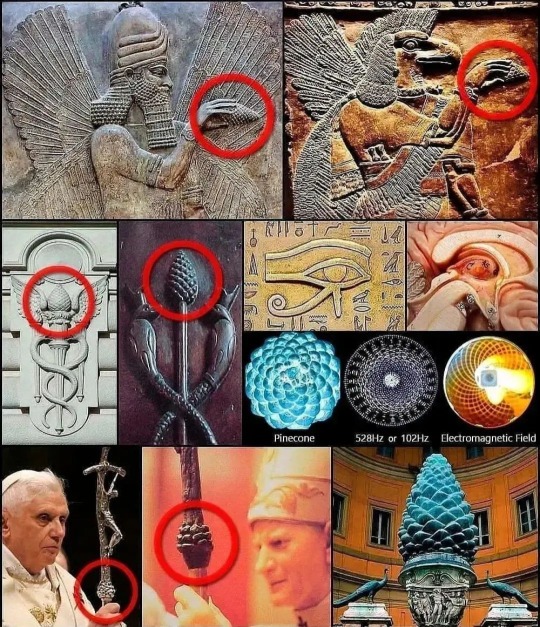
The pinecone is universally revered as one of the purest naturally occurring forms of Sacred Geometry, its pattern being the flower's evolutionary precursor, having its spirals in a perfect Fibonacci Sequence, much like the geometry of a rose or a sunflower.
ㅤ
This ubiquitous formation in nature is a common type of phyllotaxis pattern, from the ancient Greek phýllon "leaf" and taxis "arrangement", which refers to the set of principles that govern the arrangement of leaves along the stem of plants. But not only in the plant world, these same principles govern the configuration of cycles of harmonic vibrations at all scales of nature, including in our DNA and in the orbits of the planets.
ㅤ
The pinecone symbol is one of the most mysterious emblems found in ancient and modern art and architecture.
ㅤ
Few scholars realize this, but in different cultures the pinecone alludes to the highest degree of spiritual illumination, similar to the Lotus and Flower of Life symbolism.
ㅤ
The Pinecone symbol can be found in the ruins of Egyptians, Indonesians, Babylonians, Persians, Greeks, Romans, Buddhists and Christians. It also appears in the designs of esoteric traditions such as Freemasonry, Theosophy, Gnosticism and esoteric Christianity.
ㅤ
The pinecone symbolizes the science of light and its relationship with the mind and body through our pineal gland or "Third Eye", which represents the unified awareness that directs the evolutionary energy flow. The shape of the gland has a phyllotaxis pattern similar to that of the pinecone, hence its name Pineal Gland has its origin in the word "Pinecone".
32 notes
·
View notes
Text


Theoretically nearby stars should be more likely to connect in a constellation, but it's also possible to have criss-crossing lines, which should be avoided. But when you cut out one side of the boxed-X-shape that gets generated on the spiral points, you end up with a bunch of visible spiral lines, since all these points are in fact connected together in many separate spirals. That's phyllotaxis for you!
8 notes
·
View notes
Text

Phyllotaxy of the HeartㅣDream of the Endless/Hob Gadlingㅣ5.2kㅣEㅣOneshotㅣCreator Chose Not To Use Archive Warnings
Plot what Plot/Porn without Plot, Smut, Humor, Established Relationship, Monsterfucker Hob Gadling, Tentacle Sex, Consentacles, Anal Sex, Orgasm Delay/Denial
“Is that a fucking houseplant?” Hob asks.
[read here on ao3]
written for @dreamlingbingo,
bingo card and stuff below the cut:

36 notes
·
View notes
Text
I fucking hate those "science is cool" or "I love science" that give semi correct to completely incorrect fact, do not put any source to any of their claims and share random unrelated stuff with such a passion. They're just trying to make goodies out of your live for science and exciting your curiosity with half verified information which most of the time just straight up sucks.
Anyways here's the Douady and Coudert article on phyllotaxis, noticing that because of morphogenesis most plants grow along a Fibonacci pattern, it's in open access
Also had a microbiology student listened in class they'd know a tissue is a porous hygroscopic material which makes it a breeding ground for bacteria, so instead of putting a tissue on the metro bar they'd wash their hands when they get home. Fucking hell.
7 notes
·
View notes
Text
Three basic phyllotactic patterns, termed alternate, decussate (opposite), and spiral, can be directly linked to the pattern of initiation of leaf primordia on the shoot apical meristem (Figure 17.32). (...) As we discussed in Chapter 17, polar auxin transport in the L1 layer of the SAM is essential for leaf primordia emergence, and is responsible for leaf phyllotaxy (the pattern of leaf emergence from the stem; see Figure 17.32).

"Plant Physiology and Development" int'l 6e - Taiz, L., Zeiger, E., Møller, I.M., Murphy, A.
#book quotes#plant physiology and development#nonfiction#textbook#phyllotaxy#alternate#decussate#opposite#spiral#plant growth#plant development#apical meristem#auxin
0 notes
Text
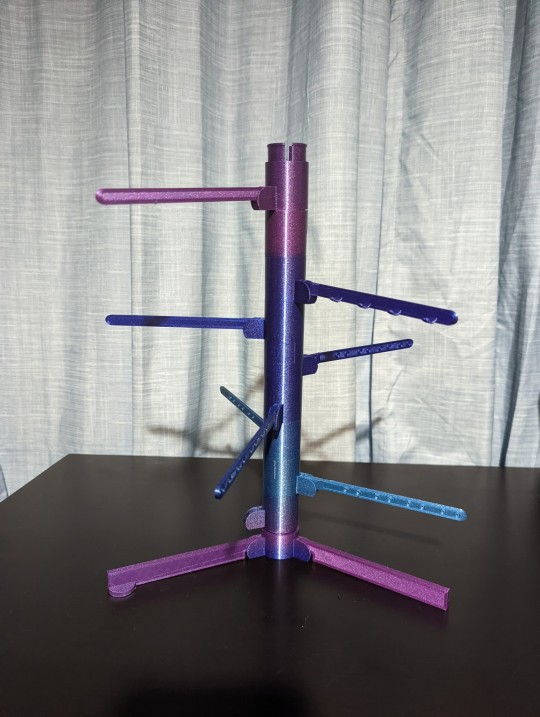
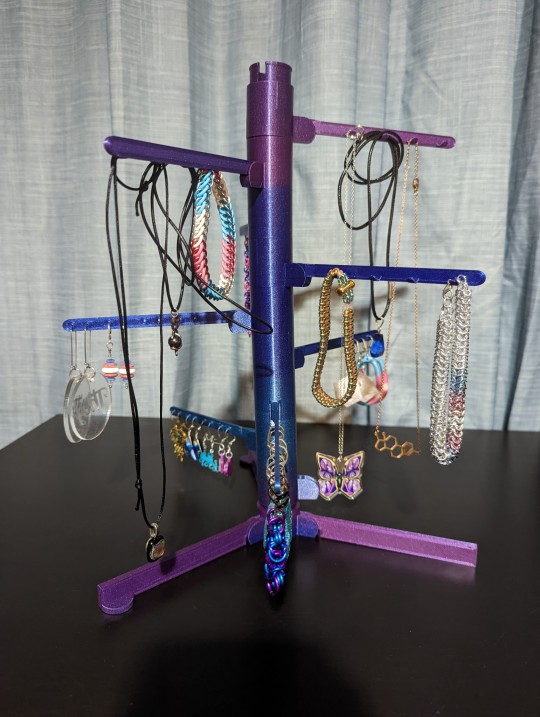
Designed and 3D printed a modular jewelry stand! The design is based on Golden Mean phyllotaxis for optimal distribution. Not perfect (I need a better way to deal with long necklaces) but I'm pretty happy with it as the first functional object I've designed and printed from scratch.
22 notes
·
View notes
Text
Day 09 – Plants.
Some kind of succulent-like plant using the phyllotaxis arrangement.
Either that or a bowl of fluffy peas.
#genuary#genuary2023#genuary9#blender#b3d#geometrynodes#generativeart#phenakistiscope#zoetrope#stroboscope#animation
2 notes
·
View notes